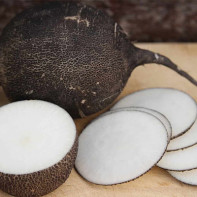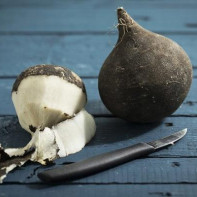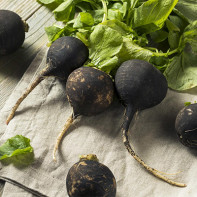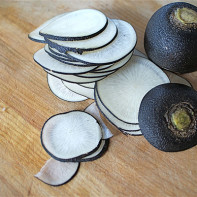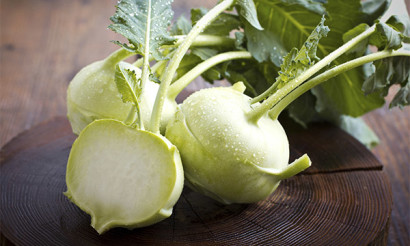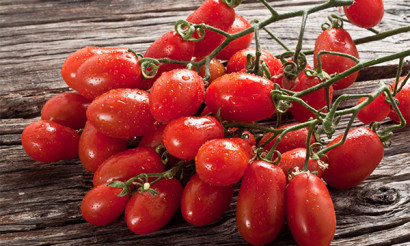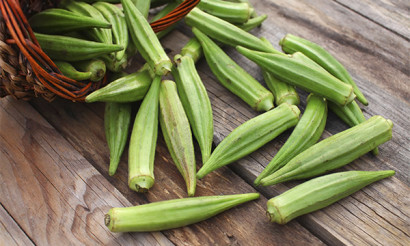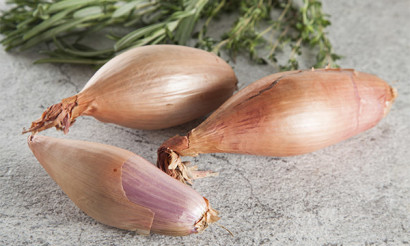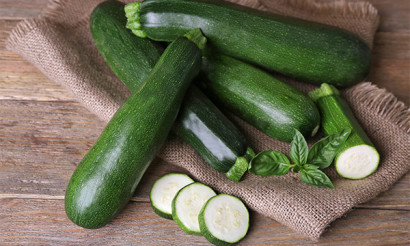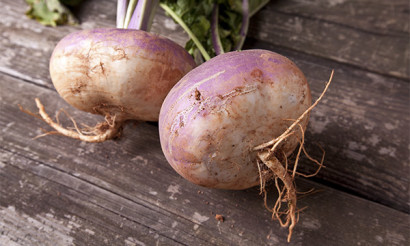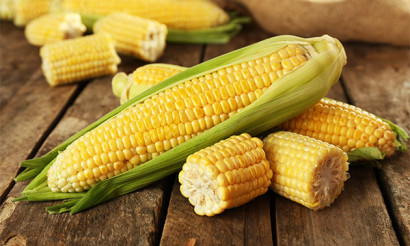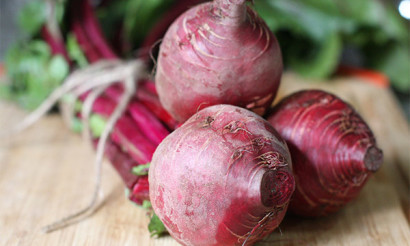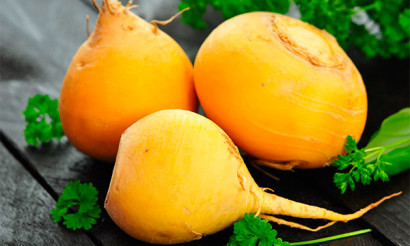Black radish: health benefits and harms
Today, radish is one of several forgotten products. And, by the way, completely undeserved, because it contains many vitamins and minerals. At the same time, there are very few calories in it.
- What is the difference between black radish and green
- Which radish is more useful: black or green
- Composition and calorie content
- Useful properties of black radish
- General benefit
- For women
- For men
- During pregnancy
- When breastfeeding
- For kids
- When losing weight
- The benefits of black radish juice
- Black radish in medicine
- With diabetes
- With pancreatitis
- With gout
- Recipes of traditional medicine based on black radish
- Black radish in cosmetology
- For face
- For hair
- Harm and contraindications
- How to choose and store black radish
- Is it possible to freeze
- What can be cooked from black radish: recipes
- Vegetable snack
- Salad
- Filling for vegetarian dumplings
- How to remove bitterness from black radish
- Interesting Radish Facts
What is the difference between black radish and green
From a botanical point of view, any radish belongs to the Cabbage family. Both black and green are just varieties of a rather large genus, which include the beloved spring radish, and the only growing Japanese daikon.
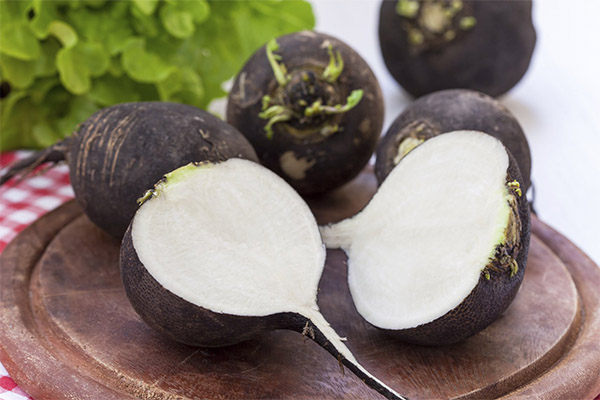
Black radish is a traditional product of Slavic cuisine. But green is often called Margilan, because it comes from Uzbekistan, where it was first bred in the city of Margilan. Currently, it grows throughout Asia, but most of all it is grown in Uzbekistan, China, South Korea and Japan.
Both varieties contain many vitamins and are considered beneficial. However, black radish has a more acute and sharp taste. In green radish, it is softer, so it is used in cooking much more often.
The taste qualities of this root crop make it possible to cook a variety of dishes from it, using such cooking methods as frying, stewing, pickling, etc. Black radish is often used as a medicine, while in cooking it is used mainly in its raw form for cooking.
Which radish is more useful: black or green
Although green radish is slightly softer to taste, black is actually more healthy. Its severity is a consequence of a higher content of essential oils. It also contains more iron, potassium and magnesium than in green. And black radish is considered the champion in the content of amino acids, which are necessary for the proper functioning of all systems in general and to increase immunity in particular. Black radish also contains organic acids that stimulate metabolic processes and help literally expel excess fats and bad cholesterol from tissues and blood.
The green radish contains fewer of these components, so it is not so useful. But it acts softer, its more pleasant taste is explained by the fact that it has fewer substances that cause increased production of gastric juice. Therefore, unlike black radish, green can easily be eaten even with gastritis.
Composition and calorie content
Black radish is considered a root crop with low energy value - only 36 kcal per 100 g. But its unique chemical composition makes it an excellent tool for the treatment of viral infections, rheumatism and joint pain. It is widely used in cosmetology and traditional medicine due to the presence of all these substances.
The composition of black radish includes:
- Glycosides. These are substances that have antimicrobial properties.
- Lysozyme. Natural antibacterial substance that inhibits the development of bacteria and even some types of fungi.
- Volatile They have antiseptic and immunomodulating properties.
- Mustard oils. They give root vegetables a characteristic bitterness, although in principle they are also considered useful.
- Minerals, including phosphorus (accelerates metabolic processes and improves cognitive functions), zinc, which has anti-inflammatory properties, and calcium, which normalizes pressure. In addition, radish contains potassium, iron (necessary for normal blood circulation), sodium, etc.
- Ascorbic acid, B vitamins (riboflavin, thiamine, folic acid), K and A (retinol). All these substances are especially necessary in the cold season to normalize metabolism, improve the state of blood vessels, and the proper functioning of the nervous system.
In addition, black radish contains a lot of fiber, which helps cleanse the intestines and improve digestion. However, it should be treated with caution. The fact is that this is a rather coarse fiber, it does not suit everyone, because it can provoke gastrointestinal diseases - provided that the person already has problems (for example, exacerbation of the chronic form of gastritis). In addition, due to the bitterness caused by the mentioned oils, nutritionists recommend including radish in the diet no more than 3 times a week.
Useful properties of black radish
General benefit
The healing properties of black radish were known in ancient times. Modern research has only confirmed what ancient doctors and traditional healers knew. Black radish has anti-inflammatory properties, and this is partly due to the content of volatile, which can be called natural antibiotics.
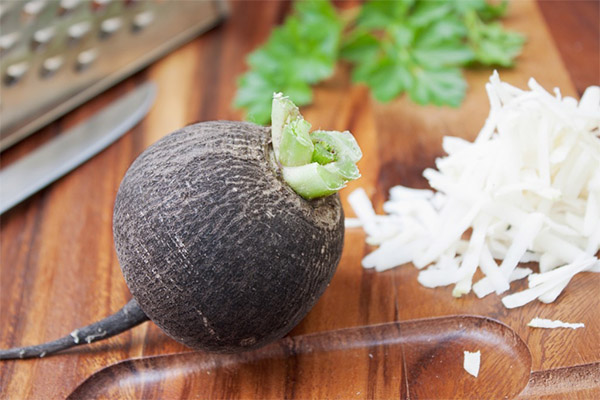
Black radish:
- Helps in the treatment of bronchitis and SARS, accompanied by cough.
- It is a prophylactic against viral diseases, as it strengthens the body's immune system and provides it with energy.
- Regulates lipid metabolism, prevents the formation of cholesterol plaques.
- Contains the active compounds necessary to strengthen the vascular walls, which helps prevent cardiovascular disease.
- Due to the presence of fiber, it helps to establish the digestive process and prevent dysbiosis, since such dietary fiber serves as food for beneficial microorganisms.
There is also a theory that regular use of black radish juice helps to remove stones from the gallbladder, but it has not received scientific confirmation. In addition, not all stones can be removed without surgery because of their size and chemical composition. In general, doctors often believe that it is better to eat not pulp with excess fiber, but its juice. It contains all the same useful substances, but does not cause flatulence and bloating.
For women
For ladies, black radish is interesting in that it helps to lose weight. In addition, the components contained in it improve fat metabolism, reduce the amount of harmful lipoproteins and help fight excess weight.
Due to its composition, black radish also has an antibacterial effect, which allows it to be used in the treatment of inflammatory gynecological diseases. In addition, this root crop normalizes hormonal balance and helps to remove pain during PMS. Finally, syrup is an excellent remedy for cystitis.
For men
Since the stronger sex is more likely to suffer from cardiovascular diseases associated with high levels of bad cholesterol, they are also advised to use black radish - primarily as a preventative against early heart attacks. This root crop contains components that have anti-inflammatory properties, which allows you to effectively treat prostatitis and prevent the development of tumors.
During pregnancy
Of course, radish can be very useful for expectant mothers, especially in the off-season, because it contains many vitamins and minerals.However, it also contains essential oils and some other components that can increase the tone of the uterus, and this often causes a miscarriage or premature birth. To reduce the number of such components, radish can be stewed with vegetables or fried. However, you still need to consult with your doctor first.
When breastfeeding
For a woman in the postpartum period, black radish may be useful in that it provides the body with all the vitamins and minerals it needs. In addition, it is proved that the use of this product helps to increase the amount of milk and facilitate its flow into the ducts. Nevertheless, since the child can react negatively to the substances contained in this root crop, eating black radish is contraindicated until the baby is two months old.
After that, radish can be used to increase the flow of breast milk. To do this, you need to take root juice mixed in equal proportions with boiled water. To improve the taste, you can add a little honey there. Once a day you need to take 1 tbsp. spoon of this mixture to improve lactation.
For kids
Although the radish contains many useful substances, children under the age of two are not given it, because their digestive system is not yet ready for products with such a content of essential oils. In the form of pulp, radish is given starting from 3-4 years, only when the child is sick.
When losing weight
Black radish cannot be the basis of a mono-diet, since it only stimulates the production of gastric juice and increases appetite. But it is added to various dishes like salads, including meat, based on boiled chicken breast. On the one hand, it allows you to improve the taste of the dish, on the other hand, it contains substances that accelerate the metabolism, so that its presence in the diet helps to lose weight. As a rule, so that all these substances are better absorbed, black radish is consumed in the form of juice (it does not affect the pancreas as much as pulp).
But radish can also be used as an external remedy for the treatment of cellulite. To do this, its pulp is mixed with fine sea salt and honey and used as a mixture for classic wrapping, leaving it on the skin for 30 minutes under a plastic wrap. The product can not be used if there are wounds on the skin.
The benefits of black radish juice
Black radish is a remedy that is useful in many diseases. Often inside it is used in the form of juice. It is best known as an expectorant, which is taken with bronchitis and ARVI, accompanied by severe cough. However, it is also effective in the treatment of inflammatory diseases of the gallbladder and liver. You can drink it only after consulting a doctor, since such a tool has a number of contraindications (including cardiovascular disease).
If the juice of black radish is used as an external medicine, then there will be much less restrictions - basically this is an individual hypersensitivity to its components. Radish juice is a great grind for rheumatism, and compresses from it often help with gout and radiculitis.
There are studies that have shown that black radish juice can be used to heal ulcers and purulent wounds.
Black radish juice can be prepared immediately. From 10 kg of root vegetables, about 3 liters of juice should be obtained. It should be stored in the refrigerator in a container with a tightly closed lid, because its smell is not very pleasant.
Black radish in medicine
In official medicine, for a long time, black radish was mainly used as a cough suppressant. However, it has been proven that it can be useful in other diseases, such as diabetes and gout.
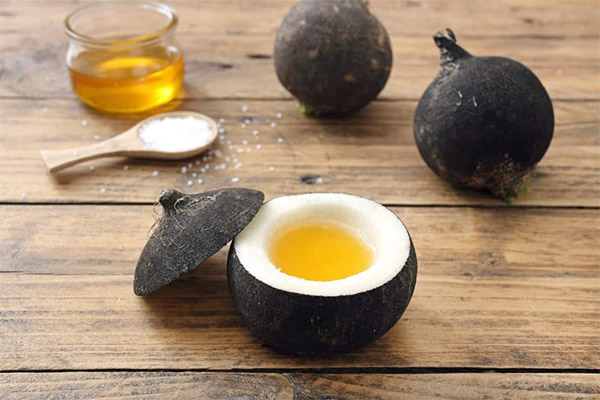
With diabetes
The composition of black radish includes many useful substances, including organic acids, vitamins, macro- and microelements, enzymes. They normalize the metabolism and establish digestion, and all together it helps to lose weight.And even essential oils that give bitterness and a characteristic smell, have useful properties and help normalize blood sugar levels.
Black radish in the treatment of diabetes can be used in many ways:
- Pure juice in itself is a medicine, it must be drunk before main meals, three times a day for 1 teaspoon.
- Juice mixed in equal proportions with honey is also consumed three times a day, but already at 1 tbsp. spoon and an hour before a meal.
- Combined product consisting of one part of radish juice, one part of carrot juice and two parts of milk. You can drink it only twice a day, in the morning and in the evening, immediately before a meal, 1 tbsp. spoon.
A common folk recipe in which the radish is ground on a grater, and then added a little sugar in it and left to infuse for 8 hours, this disease is treated with caution. It is better to just use grated radish in salads, casseroles and soups, provided that there are no contraindications. In any case, you should consult your doctor before starting treatment.
Important: glycemic index of black radish - 10 units.
With pancreatitis
In the acute form of pancreatitis, vegetables that contain a lot of essential oils are contraindicated. This also applies to radish. But with this disease it can not be used in the chronic form of pancreatitis, because due to the essential oils and fiber, it too enhances the activity of the pancreas.
With gout
In this disease, the pulp of black radish is used as a warming lotion. For this, the cake obtained after grinding the root crop on a grater and squeezing the juice is wrapped in gauze and applied to the affected joint for 15–20 minutes. This helps relieve pain.
Recipes of traditional medicine based on black radish
In the recipes of traditional medicine, black radish juice or syrup from this root crop is most often used. There are the following ways to obtain this healing agent:
- The traditional method. Take a large root crop, wash and carefully cut the top together with the tops with a sharp knife. Then, a groove is cut out in the pulp, it should be of such a size that 1 tbsp. Fit in it. a spoonful of honey (it is best to take lime) and there would still be some more space for incoming juice. The prepared root crop is closed with a chopped top instead of the lid and left in a dark place for 10 hours. After that, the syrup formed inside can be used to treat cough - 1 tbsp. spoon a day before breakfast, lunch and dinner. The root crop is not thrown away, but a new portion of honey is added to it so that the syrup forms again. The vegetable can be used for three days, then it will have to be replaced.
- Syrup with SARS. The large black radish is washed, cleaned, then its pulp is cut into small cubes and placed in a liter jar. There they pour 2 tbsp. tablespoons of honey and leave this remedy for at least a day. The container should not be covered with a lid, but with a doubled gauze napkin. The resulting syrup is taken 1 teaspoon before each meal.
- The express method is used when it is not possible to infuse syrup for a long time. One root vegetable is washed, peeled from it, crushed on a grater and the juice is wiped out through gauze. All the obtained amount of juice is mixed with 2 teaspoons of honey. You need to drink it three times a day for 1 tbsp. spoon immediately before meals.
- Also based on radish make an analog of mustard. To get the desired warming effect, for 1 cup of grated pulp take a couple of cloves of garlic. Such a composition is applied to the skin under the scapula. It should warm, but with a strong burning sensation on the skin, the impromptu “mustard” is immediately removed. Even if there was no burning sensation, the skin in this place will be red, but it should be so. Lubricate it with oil or a nourishing cream. The procedure is carried out at night.
- Similar compresses are done with rheumatism and radiculitis. There is one more option - two parts of honey and one vodka are taken in three parts of the radish juice. You can add a little salt.All this is mixed and applied to the problematic joint, which is previously recommended to steam. The mixture is rubbed lightly to get the desired effect, but you can simply fix it for 10 minutes with a bandage.
Black radish in cosmetology
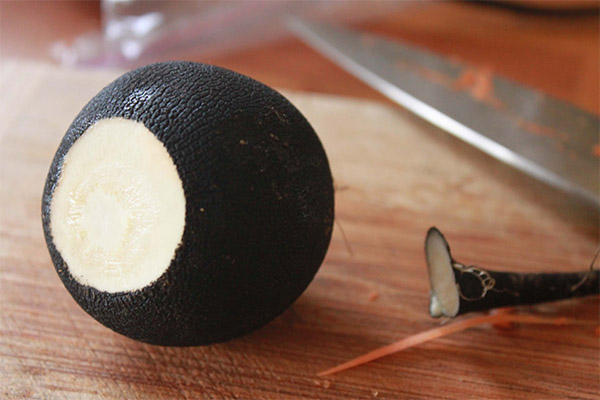
For face
Due to its unique composition, black radish is widely used in home cosmetology. For example, on its basis you can prepare the following tools:
- Nourishing mask. Take one root crop, grind on a grater, select 1 tbsp. spoon of the resulting mass, mixed with 1 teaspoon of flower honey and 1 tbsp. spoonful of sour cream, add a little olive oil. This product is applied to previously cleaned and lubricated face cream in a single layer. If there are unpleasant burning sensations, it is better to immediately wash off the composition. If they are not, you can apply a second coat. After 10 minutes, the mask is washed off with warm water, and then washed again with cool and apply a nourishing cream. The product not only nourishes the skin, but also tightens it, gives a healthy color.
- Mask for oily skin. Take 1 tbsp. a spoonful of chopped radish pulp mixed with beaten raw egg yolk. The product is applied to the skin for 20 minutes, then removed with a cotton pad dipped in weak green tea. After 10 minutes, you can fully wash with cool water.
- Anti-aging mask. Take 2 tbsp. tablespoons finely grated radish, mixed with 1 tbsp. spoon freshly squeezed aloe juice and the same amount of brewing green tea. All ingredients are thoroughly mixed and applied to pre-prepared face skin for 15 minutes, then washed off with cool water.
Quite caustic substances contained in the pulp of radish help get rid of freckles. For this, different recipes are used. For example, juice from grated pulp survives, diluted with clean water in equal proportions, and wipe problem areas of the skin with a cotton pad dipped in this liquid. The procedure should be repeated in the morning and evening. It also has a whitening effect.
You can make a simpler mask. Radish is thoroughly washed, peeled, cut into as thin slices as possible. They are applied to problem areas of the face, previously lubricated with cosmetic oil. This application is kept on the skin for about 20-25 minutes, if there is no burning sensation. Then the slices are removed, and then the face is wiped with a swab dipped in cool milk. After 15-20 minutes, wash with cool water.
For hair
Also, based on the radish, you can make a mask for oily hair. As in other cases, the pulp is ground on a grater and a nettle broth is added (1 tbsp.spoon of plant material per glass of boiling water). The mixture is applied to the scalp, gently rubbing into the hair roots. After that they put on a plastic hat, and a towel is tied on top. After half an hour, the mask is removed. The course of treatment is 4-8 times during the month, followed by a long break for 8 weeks.
Harm and contraindications
Although in general radish contains many useful elements and is recognized as official medicine, its excessive use can lead to negative consequences. In particular, the substances that make up its composition can destroy tooth enamel. Studies have also shown that with prolonged use, radish can negatively affect the emotional state and even cause depression. This is especially true in cases when a person uses tincture of radish for alcohol or vodka.
If the radish is not just included from time to time in the diet, but used as a remedy on a regular basis, this must be taken into account. In general, it is recommended to carry out the course of treatment for no longer than three weeks, after which you will have to take a break. Moreover, more than two treatment courses cannot be carried out per year. These restrictions apply to adults. For children, they will be even more stringent - the course should last for more than a week.
Among the absolute contraindications to the use of radish are cardiovascular diseases, pathologies of the digestive tract, kidneys and hepatobiliary system. Also, this root crop can not be used in the presence of individual intolerance.
How to choose and store black radish
When choosing a radish, the main thing to pay attention to is that it is whole, without cracks. Each root crop needs to be checked for weight - high-quality radish should be heavy. If it seems light, it means that inside it is either empty or with flabby pulp.
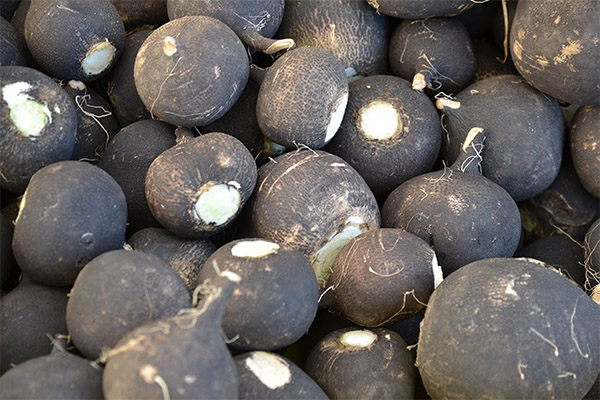
Radish can be stored throughout the winter, and all this time it will retain its healing properties. The main thing is to select high-quality specimens for storage, and the rest must either be discarded or used immediately (especially if they are small). Sluggish and soft root crops, as well as those that have mechanical damage and signs of rot, should not be left for storage. If there is at least minor damage, it is likely that the fruit will deteriorate not only by itself, but also provoke damage to other vegetables.
To prepare the radish for storage, first you need to get rid of its tops. By the way, in the old days this root crop was used without waste, and even today some chefs say that radish tops can be added to salads. Be that as it may, it should be cut with a sharp knife so that the fetus retains moisture for a long time. If you tear it off with your hands, you can damage the vegetable, and it will quickly deteriorate.
Much depends on when the fruits were harvested. If, as is often the case in autumn, in humid weather, you must first dry them in a ventilated room so that they do not get direct sunlight. The maximum period during which the radish can be kept in a normal room is 2 weeks from the time of collection. After that, it should be placed in the cellar.
In winter, radish should be stored in a wooden container. But at the same time, wet sand should be poured onto the bottom of such a box. And each subsequent layer of vegetables is also sprinkled with wet sand. It also forms the top layer in a wooden box. During the winter, the condition of the radish in this box must be controlled, the sand should be slightly moistened with water as it dries.
Radish should not be stored next to fruit trees. They release substances into the air that will provoke the germination of root crops, because of which they will deteriorate faster. Other root crops such as potatoes and carrots are considered the best neighbors for radishes. The fact is that the potato itself releases a little moisture into the air, which allows the radish to remain quite elastic and juicy.
It is clear that not everyone has the opportunity to store radish in the cellar. In this case, a balcony is also suitable, but only if it is glazed, and the temperature on it, even in winter, does not drop below zero. At the same time, root crops must be put in durable plastic bags in which to carefully make holes for air circulation. In severe frosts, when the temperature on the balcony drops, it is recommended to cover the vegetables with a warm blanket.
Is it possible to freeze
Black radish can be frozen, in this case it retains all the nutrients. To do this, take whole fruits, wash them thoroughly under running water, and then dry them indoors naturally. Although many people believe that the peel can not be removed, it should be remembered that after freezing it will be much more difficult to clean the radish, so it is better to do this in advance.
As already mentioned, the tops from root crops are cut with a sharp knife, right along with the tops, the roots are also cut. Prepared vegetables can be cut into slices, small pieces or even chopped on a coarse grater. In any case, they are allowed to drain for a while, and then they are placed in containers or plastic bags used for freezing.
Some housewives even freeze mixtures, which are then used to prepare snacks. An example is the harvest of black radish, carrots and not too sweet varieties of apples (all components are taken in a ratio of 1: 1: 3). The radish is peeled and rubbed on a coarse grater, and the juice is squeezed.Raw carrots and apples are cut into small strips. Then all the components are mixed, laid in prepared containers and put in the freezer.
Grated radish itself is frozen for medicinal purposes. It is washed, cleaned, crushed on a coarse grater, allowed to drain the juice, making sure that the mass does not dry completely. Then grated vegetables are placed in plastic bags or plastic containers (best portioned) and put in the freezer.
What can be cooked from black radish: recipes
Black radish is most often eaten raw, adding it to salads. Indeed, in this case (without heat treatment) much more useful substances are stored. However, this does not mean that radishes should not be used for anything else. Its white flesh in its raw form crunches and has an island taste, but creamy shades are distinguishable in it, which after heat treatment become more pronounced.
Black radish, if you remove the bitterness, can be fried, stewed, boiled and marinated, added to soups and mashed from it. Some culinary experts advise cutting root vegetables into thin slices and making them into chips, which are especially tasty in combination with a thick and sweet sauce. You can also boil black radish with pumpkin, add honey and make a spicy-sweet dessert.
Vegetable snack
Although black radish can be stored under suitable conditions throughout the winter, excellent stocks are also obtained from it. For example, you can cook a vegetable snack, for which you need 400 g of black radish, 100 g of carrots and sweet pepper, a few cloves of garlic, dill greens - up to 50 g. Sugar and salt are taken in 1 tbsp. spoon. Also need table vinegar - 40 ml.
There is nothing complicated in the cooking process. Wash the radish, peel it and chop it on a coarse grater, and then add sliced garlic cloves and chopped greens to this. Sweet pepper is cut into strips, carrots should also be grated on a coarse grater. Pepper and carrots are brought to a boil and left on low heat for 5 minutes, and then drained, added to the radish, put salt, add sugar and vinegar, mix thoroughly. Vegetables are laid out in jars that undergo the sterilization process beforehand and poured with boiling water so that it slightly covers the vegetables. Banks pasteurize for 10-15 minutes depending on the volume. Then they are closed and put away under the covers until they have cooled.
Salad
Black radish can be added to salads. Moreover, in winter, in the absence of tomatoes, cucumbers and sweet peppers, beets and cabbage quickly become boring. And black radish will help bring variety to the diet. For example, you can make a salad with carrots, radishes and caraway seeds. To do this, take 2 black carrots, 2 cloves of garlic, half a lemon and a pinch of cumin for 2 carrots. Salt and walnuts to taste. For refueling use olive oil. Carrots and radishes are peeled, washed thoroughly, then rubbed on the smallest grater. Chop garlic and nuts, mix with vegetables, season with lemon juice and olive oil, and sprinkle with caraway seeds on top.
Filling for vegetarian dumplings
You can make a filling of black radish for vegetarian dumplings. For the test you will need, as usual, for 1.5 cups flour 1/2 cup water, half an egg, salt to taste. For the filling, take 250 g of radish, a few feathers of green onions, 1.5 tbsp. tablespoons of vegetable or butter. Radish is peeled, washed, crushed on a coarse grater. To leave the bitterness, the mass is slightly fried in vegetable or butter with the addition of sour cream. Then the radish is mixed with chopped green onions - this will be the filling. In general, dumplings are cooked in the usual way.
How to remove bitterness from black radish
One of the reasons why black radish is not particularly popular in cooking is its bitter taste. Many housewives believe that to get rid of bitterness, it is enough to simply peel the peel, since it is the source of the problems, and it also gives an unpleasant smell. But in fact, this is completely insufficient to soften the taste of black radish. It is better to use one of the following methods:
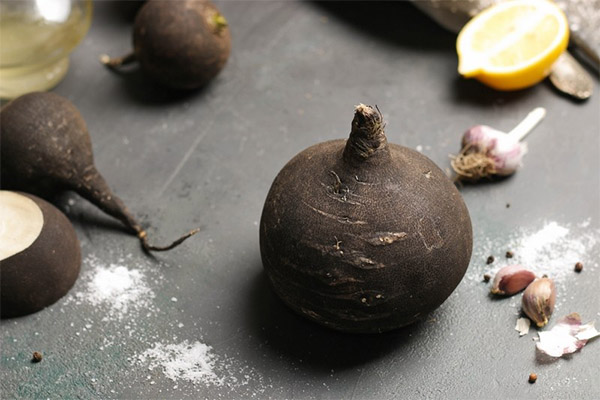
- The root crops are washed, peeled, cut into rather thin plates no more than 2 cm thick, and poured with a small amount of cold milk. If the radish is particularly bitter, it’s better not even to cut it, but to grind it on a coarse grater. In milk it is left for half an hour. After that, the plates or slices of the radish are squeezed out, washed with water, if desired, and then a conceived dish is prepared with it.
- The root crop is peeled, cut into slices, poured with cold water with a small addition of salt. Water is left for 20 minutes, then drained. This method allows you to maintain pungency without bitterness.
- Washed, peeled and grated pulp of radish is mixed with chopped carrots. This mixture, in which a sweet root crop neutralizes the bitter, can serve as the basis for a variety of salads.
- The peeled root vegetable is ground on a special grater intended for Korean carrots and poured with hot water, but not boiling water. So leave for 3 minutes, then drain the water, and pour the radish with lemon juice.
- Radish is washed, cleaned, rubbed on a coarse grater, sprinkled with salt. After some time, juice begins to stand out. It is squeezed, and the remaining pulp is washed, after which it will no longer be bitter.
Finally, there is another way. It is necessary to put the grated pulp of the radish into cold water, and add as many ice cubes as possible there. After 20 minutes, you can squeeze the pulp and use it for culinary purposes.
Interesting Radish Facts
- Although the radish is considered to be a primordially Russian product, in fact its homeland is the Mediterranean. In culture, this plant has been grown for more than 4,000 years, and it all began with ancient Egypt. To this day, records have even reached of how many radishes were used for food by the workers who built the Cheops pyramid. From there, the radish came to ancient Greece, where it won the recognition of doctors, including the famous Hippocrates, the father of medicine. In the diet of the inhabitants of Hellas, it played a prominent role along with carrots and beets, because potatoes in those days in Europe did not know.
- Interestingly, other types of radish were common in Asia. But in Japan and in China, she played an important role both in the diet and in the first-aid kit.
- In Russia, they began to grow radish about 900 years ago. It was believed that from it you can cook seven dishes. It was added to the prison, which was considered the food of the poor, and to more solid snacks. At the same time in the post, she was indeed a frequent guest on the table. So it was from here that the saying came that something or someone was tired of "worse than a bitter radish."
- Currently, eight species of plants are found in the wild, and everything that is presented in stores is the same kind of radish, only of different varieties.
«Important: all information on the site is provided exclusively in fact-finding purposes. Before applying any recommendations, consult with a profile specialist. Neither the editors nor the authors are liable for any possible harm caused materials. "

